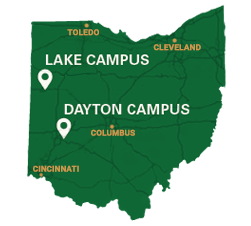Wright State University created the Office of University Compliance to provide central coordination, independent oversight and monitoring of University compliance functions, and to create a culture that supports compliance and ethics in every day decision making.
Explore the University Compliance website for more information on the University Compliance Program, locating University policies, resources, training opportunities, how to report compliance concerns, and more!
Visit the Compliance Blog regularly for updates and spotlights on our different compliance areas on campus!
What is a Compliance Program?
Compliance programs focus on "big picture" activities. They are process-oriented. Compliance programs conduct proactive risk management based on audit and assessment metrics, past performance, and national enforcement actions. Often, they identify regulatory issues that may have already occurred and facilitate process and policy changes to help prevent them from happening again. Importantly, compliance programs are cross-functional and inter-departmental in nature.
Compliance is conformity in fulfilling official requirements.*
The federal government, through the Federal Sentencing Guidelines**, sets out 7 elements that make a compliance program "effective."
- Policies, Procedures, & Standards of Conduct
- Oversight of Governing Authority
- Effective Training & Education
- Effective Lines of Communication (Hotline)
- Internal Monitoring & Auditing
- Incentives & Discipline
- Corrective Action
In addition to these 7 elements, a compliance program needs to be assessed periodically and modified appropriately, as needed.
Higher Education Regulatory Environment
Higher education institutions are experiencing increasing regulatory demands and expectations. The complexity of requirements is growing, as well. The regulatory environment is also becoming more enforcement focused and is defined by:
- Institutional accountability
- Government oversight
- More aggressive enforcement initiatives, including:
- Monetary fines
- Exclusion from participation in federal programs (such as sponsored research) or receiving federal funding (such as student financial aid)
- Written corrective action agreements
- Criminal penalties
- Regulator expectations of institutional oversight of regulatory requirements
- Lack of institutional oversight often leads to more severe penalties
- Government agencies are more likely to work collaboratively to resolve issues if strong institutional controls can be demonstrated
| Federal Enforcement Agencies | Sources of Requirements |
|---|---|
|
Federal Drug Administration |
Federal & State Laws |
| Office for Human Research Protections | Advisory Opinions |
| Centers for Medicare & Medicaid Services | Executive Orders |
| Office for Civil Rights | Dear Colleague Letters |
| Internal Revenue Service | FAQs & Guidance Documents |
| Department of Education | Handbooks |
| Department of Homeland Security | |
| Department of Labor | |
| Department of Justice | |
| Office of Inspector General | |
| Immigration & Customs Enforcement |
*Merriam-Webster Dictionary
**United States Sentencing Commission, Guidelines Manual, §8B2.1 (Nov. 2015).

